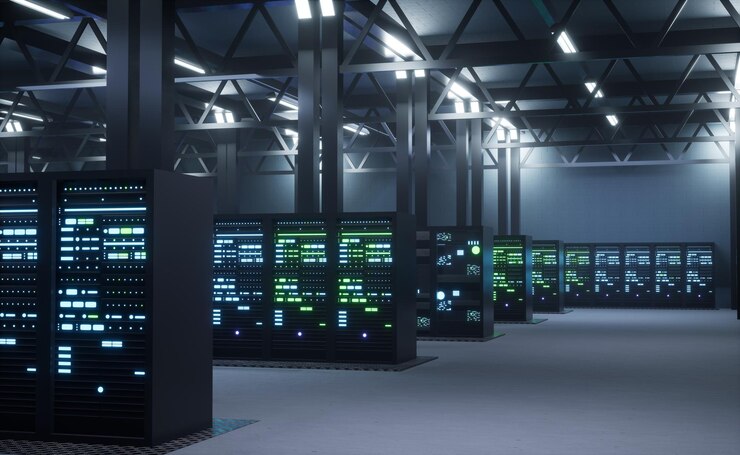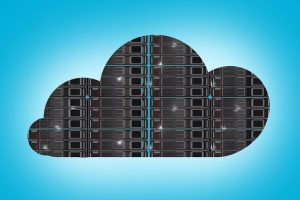VPS Configuration: RAM, CPU & Storage Optimization
Virtual Private Servers (VPS) have become a cornerstone of modern web hosting, offering a balance of control, scalability, and affordability. But simply *having* a VPS isn’t enough. The true power of a VPS is unlocked through careful configuration, specifically optimizing its core resources: RAM, CPU, and Storage. This article delves into these crucial aspects, guiding you through understanding your needs and making informed choices.
Understanding VPS Resource Needs
Before diving into specific configurations, it’s vital to understand *why* each resource matters and how your application’s demands influence those needs. Thinking about resource allocation is not about maximizing numbers, but about efficient allocation. A VPS with ample resources that aren’t properly utilized is as wasteful as one that’s constantly struggling under load. We’ll look at each resource and then combine those to give realistic examples.
RAM (Random Access Memory) is your VPS’s short-term memory. It’s where the operating system, applications, and data actively being used are stored. Imagine it as your work desk – the bigger the desk, the more you can have open and readily accessible. Insufficient RAM results in *swapping*, where the system starts using storage space (much slower) as virtual memory. This drastically slows down performance. The type of RAM is also important. Generally, VPS providers offer DDR4 or DDR5 RAM. DDR5 is faster and more efficient, but also more expensive. While most users won’t notice a massive difference for basic tasks, memory-intensive applications like databases or large caching systems will benefit significantly from DDR5.
CPU (Central Processing Unit) is the brain of your VPS, responsible for executing instructions. It’s measured in ‘cores’ and ‘vCores’. A core represents a physical processing unit. ‘vCores’ are virtual cores, meaning a single physical core can be virtualized into multiple vCores. While vCores offer flexibility, they don’t necessarily equate to the same processing power as a dedicated physical core. CPU performance is also affected by clock speed (GHz) – higher is generally better, but architecture plays a huge role (a newer generation CPU at a lower GHz can outperform an older generation at a higher GHz). Common CPU families offered by VPS providers include Intel Xeon, AMD EPYC, and sometimes newer generations like Intel Ice Lake or AMD Milan. The specific generation significantly impacts performance per vCore.
Storage is where your files, databases, and operating system are permanently stored. There are two main types: SSD (Solid State Drive) and HDD (Hard Disk Drive). HDDs are cheaper but significantly slower, relying on spinning platters. SSDs use flash memory, providing much faster read/write speeds. For a VPS, SSD storage is *highly* recommended. Nowadays, NVMe SSDs are common, which are even faster than traditional SATA SSDs, leveraging the PCIe interface. Storage capacity should be sufficient for your operating system, applications, data, and anticipated growth. Consider both the *size* of the storage and the *IOPS* (Input/Output Operations Per Second) – a higher IOPS indicates faster data access, crucial for databases and high-traffic websites. RAID configurations (Redundant Array of Independent Disks) are occasionally offered, providing data redundancy and improved performance; however, they often come at an additional cost.
Furthermore, consider the operating system itself. A lightweight Linux distribution like Alpine Linux will have much lower RAM requirements than a full-blown desktop environment like Ubuntu with a graphical interface. Similarly, the programming languages and frameworks you use also influence resource consumption. Node.js applications, for example, are generally memory-efficient, while Java applications can be more demanding.
Matching Configuration to Workload: Common Scenarios
Now that we understand the individual resources, let’s look at how to align them with common VPS use cases. To effectively choose a VPS configuration, you need to realistically assess your anticipated workload. Overestimating will lead to wasted resources and increased costs, while underestimating will result in performance bottlenecks and a poor user experience. Let’s consider a few scenarios:
- Basic Website/Blog (Low Traffic): If you’re running a simple WordPress blog or a static HTML website with relatively low traffic (under 500-1000 visitors per month), you can often get by with:
- RAM: 1-2 GB
- CPU: 1-2 vCores
- Storage: 20-40 GB SSD
- Medium-Traffic Website/eCommerce (Moderate Load): For websites with moderate traffic (5,000-20,000 visitors per month), or a small e-commerce store, you’ll need more resources:
- RAM: 4-8 GB
- CPU: 2-4 vCores
- Storage: 40-80 GB SSD
- Resource-Intensive Applications (High Load): Running complex applications like game servers, video streaming services, large databases, or machine learning models demands significant resources:
- RAM: 8 GB+ (potentially 32GB or more)
- CPU: 4+ vCores (potentially 8 or more)
- Storage: 80 GB+ SSD (NVMe recommended)
- Development/Testing Environment: Requirements vary depending on the complexity of your development stack. Starting with:
- RAM: 2-4 GB
- CPU: 2 vCores
- Storage: 40 GB SSD
In these cases, prioritizing SSD storage is the most important factor for responsiveness. A lightweight web server like Nginx will further optimize performance.
Here, you need to carefully consider the database backend (MySQL, PostgreSQL). Optimizing database queries and utilizing caching mechanisms (like Redis or Memcached) becomes crucial. A more robust web server like Apache (configured for performance) or Nginx can be employed.
For these applications, it’s crucial to monitor resource usage *continuously* using tools like top, htop, or dedicated monitoring solutions. Choosing the right database engine, implementing aggressive caching, and optimizing application code are all paramount. The type of CPU (generation and core count) will heavily impact performance.
Is a good starting point for small projects. You can scale up as your project grows and you begin running more complex applications within your development environment.
These are just starting points. Using monitoring tools to track resource consumption is crucial for fine-tuning your configuration. Don’t be afraid to scale up or down as your needs evolve.
The Importance of Scalability and Monitoring
The beauty of VPS solutions lies in their scalability. Unlike dedicated servers, where upgrading hardware means physical intervention, VPS configurations can often be adjusted on demand. Most providers allow you to easily increase RAM, CPU cores, or storage capacity with minimal downtime. However, scalability should be considered *proactively*, not just reactively. Anticipate growth and plan for potential spikes in traffic or workload. Setting up automated scaling rules (if supported by your provider) can be a lifesaver during unexpected surges.
Equally important is continuous monitoring. You need to understand how your VPS is actually performing, not just what the theoretical specifications are. Key metrics to monitor include:
- CPU Usage: High CPU usage for extended periods indicates a bottleneck.
- RAM Usage: Consistently high RAM usage leads to swapping and performance degradation.
- Disk I/O: High disk I/O (especially if using HDD) indicates slow storage access.
- Network Traffic: Monitor bandwidth usage to detect potential DDoS attacks or unusually high traffic.
- Load Average: A measure of system activity, indicating the number of processes waiting to run.
Tools like top and htop (on Linux), or more comprehensive monitoring solutions like Nagios, Zabbix, or New Relic, can provide valuable insights. Many VPS providers also offer their own monitoring dashboards. Analyzing these metrics will help you identify bottlenecks, optimize your applications, and fine-tune your VPS configuration. Logging is also essential – examine your web server logs, database logs, and application logs for errors or performance issues.
Furthermore, understand the provider’s limitations. Some providers may throttle resources during peak times, or have limitations on the number of I/O operations per second. Review the provider’s Terms of Service carefully to understand any potential restrictions.
Beyond the Basics: Optimization Techniques
Once you’ve selected a base VPS configuration, there are several optimization techniques you can employ to further enhance performance. These techniques often require some technical expertise, but the rewards can be significant.
- Caching: Implementing caching mechanisms (like Redis, Memcached, or Varnish) can dramatically reduce database load and improve response times.
- Database Optimization: Properly indexing your database tables, optimizing queries, and using a caching layer for frequently accessed data are crucial for database performance.
- Web Server Optimization: Configure your web server (Apache, Nginx) for optimal performance by enabling compression, setting appropriate caching headers, and minimizing the number of static assets.
- Code Optimization: Review your application code for inefficiencies and optimize it for performance. Profiling tools can help identify bottlenecks.
- Use a Content Delivery Network (CDN): Distribute your static assets across multiple servers geographically closer to your users, reducing latency and improving load times.
- Keep Software Updated: Regularly update your operating system, web server, database, and applications to benefit from performance improvements and security patches.
- Choose the Right Control Panel (if any): Control panels like cPanel or Plesk can simplify server management, but they also consume resources. Choose a lightweight control panel if you need one.
These techniques are cumulative – the more you optimize, the better your VPS will perform. Remember that optimization is an ongoing process, not a one-time task.
In essence, configuring a VPS is a balancing act. It’s about understanding your application’s unique needs, choosing the right resources, and continuously monitoring and optimizing performance. By carefully considering RAM, CPU, and storage, and leveraging the scalability and optimization techniques available, you can unlock the full potential of your VPS and ensure a smooth and responsive experience for your users. Selecting the correct resources, coupled with proactive monitoring and constant refinement, guarantees a well-performing and cost-effective solution aligned with your evolving requirements.












